Leaking Shower – What Am I Looking For?
What are the signs of a leaky shower?
A leaking shower can create major problems, apart from mould and damp in walls, a leaking shower can lead to building issues and structural failure.
Do you know the signs of a leaking shower?
There are numerous signs to look for and many do not only appear in the bathroom area, they can also manifest in other locations around the home.
Here are a few signs to look if you suspect your shower is leaking –
-
Bathroom doors and surrounding areas
Most of the doors/architraves and skirting’s are made from wood or a compressed wood compound. These materials have a tendency to swell when they come in contact with moisture over a period of time.
 Look for swelling or discolouration; this may be an indication of escaping water.
Look for swelling or discolouration; this may be an indication of escaping water.
 Look at the bottom of your architraves door jams and skirting in the general area of the bathroom. If there has been a leak for a long period, you may see rotting timber, this is a serious sign and the leak must be stopped immediately before more damage can be done.
Look at the bottom of your architraves door jams and skirting in the general area of the bathroom. If there has been a leak for a long period, you may see rotting timber, this is a serious sign and the leak must be stopped immediately before more damage can be done.
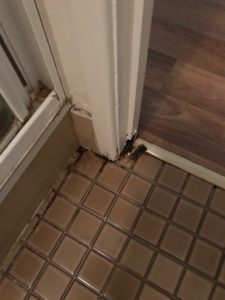
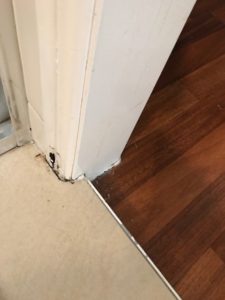
-
Loose tiles
Loose tiles are a very common sign of a leaky showers and moisture damages. This is due to the fact that the adhesives put in place to hold the tiles are weakened and damaged by the moisture building up behind them.
 Look for a warped surface on the wall, which can cause a shift in the tiles.
Look for a warped surface on the wall, which can cause a shift in the tiles.
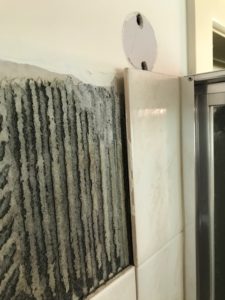
-
Damaged walls and ceilings
If you observe your walls and ceiling closely and regularly, you can get a hint if there is a water leak. Water leaks from leaking showers can lead to degradation and weakening of ceilings and walls.
 Look for water stains to walls and ceilings and changes to surfaces i.e loss of shine and aesthetic appearance.
Look for water stains to walls and ceilings and changes to surfaces i.e loss of shine and aesthetic appearance.
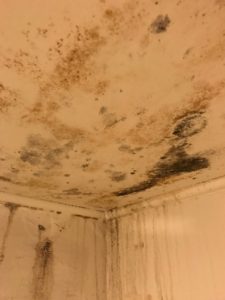
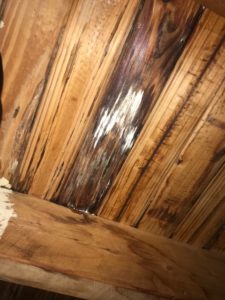
-
The Smell of rot
When it comes to a leaky shower, the smell of rot is usually what gives it away in most cases. Our walls are a mixture of various materials like wood, cement, and mortar. Moisture from a leaking shower causes these materials to decay and weaken which usually leads to a very unpleasant smell around the house. These smells can be attributed to rotting wood, mould and point to a high probability that there is a major leak in the house.
-
Falling/Bubbling paint on the wall
Apart from the degradation and wear of materials, moisture also has an adverse effect on paint on the wall and timber surrounds.
 Look for moisture underneath any layer of paint, gaps or bubbles that form underneath the paint.
Look for moisture underneath any layer of paint, gaps or bubbles that form underneath the paint.
 Look for cracking and flaking paint.
Look for cracking and flaking paint.
Once these are observed it can indicate moisture damage and the possibility of a leaking shower.
If paint no longer sticks to the wall, there is an obvious indicator!
-
Grout failure
Grout is the rough sand-like material that is used to fill in gaps between the tiles on your walls and floor. The right grout provides a durable waterproof barrier which compliments the tiles and style of the bathroom. Grout can crack, shrink or fall out and begins to lose its grip due to various reason which can lead to moisture in the walls.

Look for
- Wet floors
- Smelly/wet carpet or rugs
- Visible spaces in Tiles
- Gaps in wall joints
- Watermarks on ceilings and walls underneath bathrooms
- Off-color marks on tiles
Most leaking showers can be repaired without removing tiles at a very reasonable rate.
If you’re worried about your shower or If you think you may have a leak, give us a call
